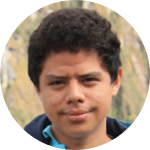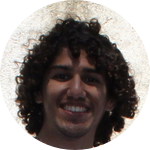About This Project
How does Managua’s bus system perform and what happens when you reveal this information to users? This collaborative experiment combines two open-data tools to collect data on bus route frequency, digitalize the information in web-based format for users to explore, and assess implications of interactive visualization. We will test the implications in terms of users’ knowledge and perceptions of the bus system and possibilities for improvements.
Ask the Scientists
Join The DiscussionWhat is the context of this research?
The OpenStreetMap community in Nicaragua has the mission of creating useful maps in a collaborative and open data format. In this context, three years ago the community began mapping the public transportation system in Nicaragua’s capital, Managua, and developed the first web-based application with detailed route information of Managua and surrounding cities.
MIT’s Mobility Futures Collaborative (MFC) has developed several tools to digitalize transportation data collection and visualization. Flocktracker is an Android-based data collection tool. CoAXs is an open-source, open-data-based tool designed to enable collaborative understanding and planning of public transportation networks. This project represents the first effort to deploy Flocktracker and CoAXs together.
What is the significance of this project?
In Managua, 75% of the population use buses. However, the service is unreliable, slow, unsafe and uncomfortable. This increases the attractiveness of private cars, which only worsens the situation. What if we could provide information to allow citizens to better plan their trips and make better use of their time? Furthermore, what if such data could also be used to generate an evidence-based discussion among main stakeholders to study and improve transit in the city? What impacts might such information have on users, planners, and operators of the system? Will users’ mobility improve? Can new system improvements be identified, collaboratively? Answering these questions has the potential to improve the quality of life of nearly 1 million people.
What are the goals of the project?
Our overall goal is to build technical capacity for and knowledge about public transportation services and planning in Managua. Our specific objectives are to improve the accuracy bus frequency data in Managua, convert the data into GTFS (a common format for digital public transport information), make the information publicly available, and assess the impacts of doing so. We plan to test two general hypotheses. First, we expect that making detailed route and frequency information widely available in digital format will improve users’ perception of the bus system and the city more generally. Second, we expect that deploying this information in an interactive planning tool will generate new ideas for, and some agreement on, areas for bus system improvements.
Budget
We will use smartphones to collect the data. However, given that thefts in Managua's public transportation system are common, the purchase of additional phones—since we already possess a small set—will allow the collection of data without individuals’ risking the loss of their personal mobile phones. The budget also includes a small stipend to help data collectors offset related costs, such as food and transportation. In total five data collectors will be 'hired' to collect bus frequency information and will work about 18 hours split into six 3 hour-long shifts. Another nine individuals will be recruited to perform surveys within the buses and to collect bus stop information. Finally, workshops will be held to train the general population on how to use OpenStreetMap and CoAXs, an open-source planning tool.
Endorsed by
Meet the Team
Team Bio
The research team for this project is comprised by faculty and graduate students from MIT's Department of Urban Studies and Planning (DUSP), as well as team members of MapaNica, the Nicaragua chapter of OpenStreetMap.
Chris Zegras
Professor Christopher Zegras: Associate Professor of Transportation & Urban Planning at DUSP. Professor Zegras has a long trajectory in urban transportation research, driven primarily by the aim to design and develop mobility systems that contribute to sustainable places. He has been the faculty lead in developing Flocktracker and CoAXs and is Lead Principal Investigator of the Future Urban Mobility research group under the Singapore-MIT Alliance for Research and Technology. To learn more visit: https://mfc.mit.edu/
Ricardo Sanchez
Ricardo Sanchez: Master in City Planning Candidate at DUSP. Ricardo worked at Office of Public Investment at the Nicaraguan Ministry of Finance in planning of transportation and energy projects. He's currently focused on improving urban mobility in developing countries.
Eduardo Augusto Mayorga
Eduardo Mayorga: Undergraduate Electrical Engineering student at the National University of Engineering in Managua, Nicaragua. He has been involved in the MapaNica community for three years and his experience includes surveying public transport data for OSM.
Daniel Heriberto Palencia Arreola
Daniel Palencia: Master in City Planning Candidate at DUSP. Daniel Palencia has worked on several projects relating seismic and soil mechanics, but currently is spending his efforts on the relationship between urban environments, their denizens and technology, mostly focusing on crowdsourced data collection and participatory planning in developing countries.
Porfirio Páiz
Porfirio Páiz: Undergraduate Civil Engineering student at the National Universtiy of Engineering in Managua, Nicaragua. Member of the core group of volunteers in MapaNica. He joined the local Free Software community in 2011 since then he has got interested in open geodata.
Lab Notes
Nothing posted yet.
Project Backers
- 25Backers
- 28%Funded
- $819Total Donations
- $32.76Average Donation








